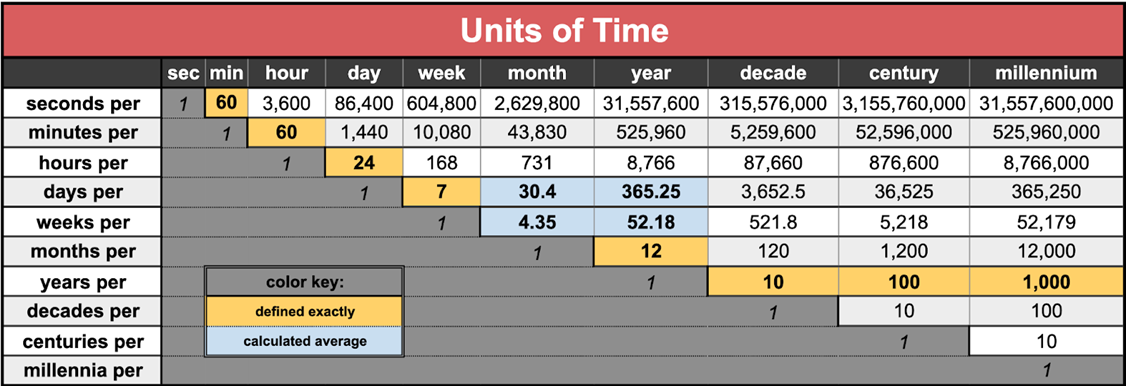Subsection 2.3.1 Time Units
The units of time in use throughout the world are:
Second (s): The second is the base unit of time in the SI system. It was historically defined as \(1⁄86400\) of a day – this factor derived from the division of the day first into 24 hours, then to 60 minutes per hour and finally to 60 seconds per minute (24 × 60 × 60 = 86400 seconds per day). This definition is not sufficiently accurate for many purposes because of irregularities in the earth’s orbit around the sun, so the second is now formally defined as the duration of 9,192,631,770 cycles of the radiation produced by the cesium-133 atom.
For time intervals smaller than a second, SI prefixes are used. One millisecond is \(10^{-3}\) seconds; 1 microsecond is \(10^{-6}\) seconds; 1 nanosecond is \(10^{-9}\) seconds; and 1 picosecond is \(10^{-12}\) seconds.
Minute (min): One minute is equal to 60 seconds.
Hour (h): One hour is equal to 60 minutes or 3,600 seconds.
Day (d): One day is defined as 24 hours, or 86,400 seconds. It is based on the Earth’s rotation period.
Week: A week consists of seven days.
Month: Months are somewhat arbitrary units of time that vary in length. The most common definitions are the calendar months, which have 28, 30, or 31 days.
Year (yr): A year is the time it takes for Earth to complete one orbit around the Sun. It is approximately 365.25 days. Decade: A decade is a period of ten years.
Century: A century is a period of one hundred years.
Millennium: A millennium is a period of one thousand years.
These units provide a way to express and measure various durations, from tiny fractions of a second to vast spans of time.


